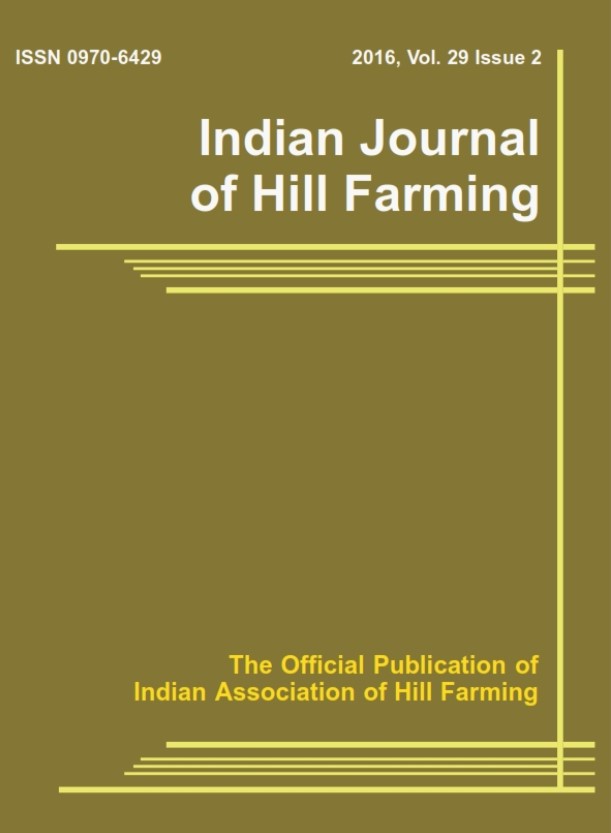Impact of crop integration on production and economics under temperate hill ecology of Jammu & Kashmir
Keywords:
IFS, hills, incomeAbstract
Crop diversification has proven its worth in all parts of the world including India. Prevailing agriculture scenario in the country demands more productive, profitable and sustainable cropping systems. Farm Science Centre (Krishi Vigyan Kendra) -Kulgam established an Integrated Farming System (IFS) model over an area of 1.0 ha in the year 2017 with agriculture, horticulture and dairy as its components and the study continued up to 2021. The aim was to test its significance in terms of production and income and subsequently present it to the famers during farm exposure and training programmes. Income obtained from the IFS was substantially higher than conventional cereal based cropping system. Net income from IFS showed a gradual increase from ₹233835/ha in 2017 to ₹790062/ha in 2020. The increase in the net income from the integrated farming system over conventional cropping system was 49.6, 144.9, 202.5, 406.0 and 335.0 % higher in 2017, 2018, 2019, 2020 and 2021, respectively. Benefit cost ratio of the crop component of the IFS fluctuated from 2017 to 2021. High Density Apple orchard recorded highest B:C ratio (3.86) among all the components. B:C ratio of dairy unit increased from 2.33 in 2017 to 2.79 in 2021.The striking feature of the IFS was the economic adversity coping up feature as observed from the higher returns from one component when the returns were not so good from other and vice versa.




